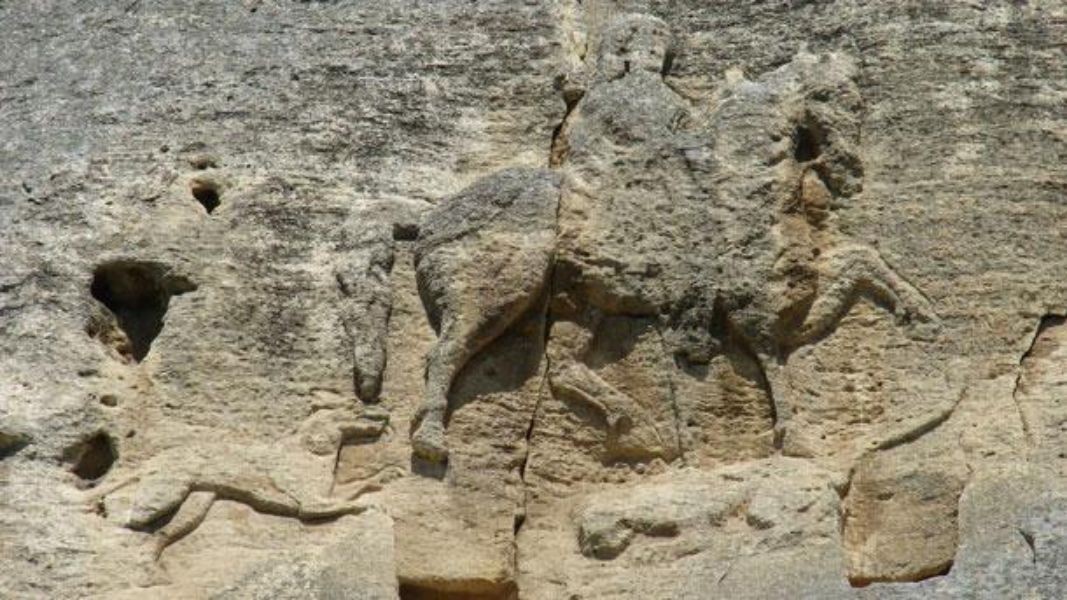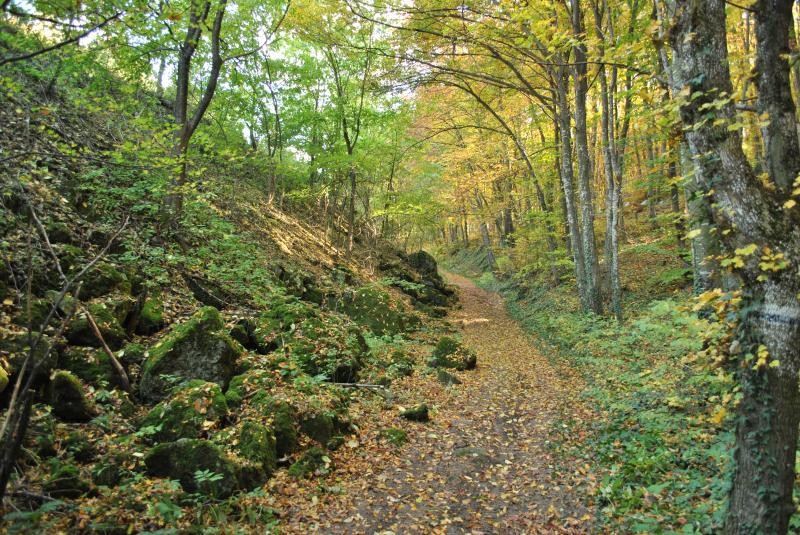"This is where Bulgaria begins - five fingers in an iron fist.
Bound by ancient tradition, hardened in march and toil!"
This is how the hymn of the city of Shumen starts, recalling of the foundation of the Bulgarian state on the Balkans in 681. In the vicinity of the present-day city one can see the remains of the ancient Bulgarian capitals Pliska and Veliki Preslav. And just 17 km away from the center of Shumen, one can see "The Madara Horseman" high in the rocks. This is the only monumental stone relief in Europe from the 8th century, included in the UNESCO list of world cultural heritage. The Horseman is part of the "Madara" historical-archaeological reserve, which is also known as "The Bulgarian Troy" because of the incredible wealth of monuments from the 4th millennium BC to the 15th century. Many rock monasteries from the early Middle Ages are situated in the area, as well as various natural attractions.

Svetlana Dzhankova from the local Tourist Information Center recommends that we should hike the Shumen Plateau:
"There are two rock monasteries on the territory of the Shumen Plateau - the Konstantinovo rock monastery and the Khankrumovo rock monastery. Each one of them is related to different periods of hermit life in our lands. Some of our rock monasteries are from the 8th century and the others date to the 14th century and are associated with hesychasm. The "Founders of the Bulgarian State" monument built in honor of the 1,300th anniversary of the founding of Bulgaria also attracts tourists. In addition, the Shumen Fortress is located on the plateau, from where the city started developing," Svetlana Dzhankova adds.

The fortress was destroyed in 1444. Nowadays, a small part of it has been restored. There is a museum in which artifacts found on its territory are exhibited, including an inscription from the 14th century, mentioning for the first time the name of the present-day city of Shumen. The view from the top of the fortress is another good reason to visit it:

"The entire city can be seen from the fortress, as if it was in the palm of your hand. You can see its well-preserved old part, with the Ottoman monuments of architecture, the clock tower, the fountains, the oldest building in our city, created by merchants from Dubrovnik in the 16th century, as well as many temples of different religions. Shumen is known for the tolerance between representatives of the different communities," Svetlana Dzhankova says.
If you love nature and hiking, this part of north-eastern Bulgaria is perfect for you with its nature reserves adorned with fragrant flowers and herbs, caves and unique rock formations, as well as rare species of birds…

"In the spring, many tourists come to watch the blooming of the orchids," says Svetlana Dzhankova and recommends contacting the Shumen Plateau directorate, where they will provide you with a mountain guide or special maps with routes to the archaeological and natural attractions in the area.
You can also read:
The flow of visitors to the Bulgarian stand at the 28th East Mediterranean International Tourism & Travel Exhibition EMITT does not stop. The exhibition is held until February 7 in Istanbul and is among the five largest tourism..
Bulgaria participates in the international tourism exhibition CMT Stuttgart . The forum is held from January 18 to 26, 2025 , and the main highlights are camping and caravanning, motorcycles, cycling, golf, SPA, cruises and others, reports bgtourism.bg...
"The Rhodope Caterpillar" - that's what they call the train that winds along the slopes of the Rhodope Mountains on the route Dimitrovgrad - Haskovo - Kardzhali - Podkova village. And no, this is not the legendary narrow-gauge railway - it runs in a..

+359 2 9336 661
